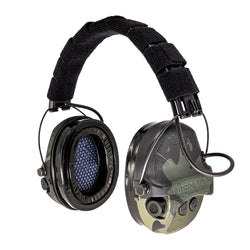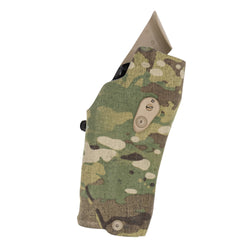I began seriously getting into guns about 15 years ago. I’d always owned guns, having bought my first shotgun as a youth, but I wasn’t really into guns. I just had a few for hunting or occasional recreational shooting. But the concealed carry bug bit me, and I found a new hobby. As I researched potential carry guns, the subject of trigger pull weight came to the fore. I’d never really heard the term, but it seemed fairly straightforward. At first, anyway.

Trigger pull weight is a simple concept, but its application is more nuanced, which I learned as I gained experience. We always see articles and videos addressing the “best” gun, accessory, or whatever. I’ve learned that whether or not something is the best mostly depends on the person using that item and the purpose for which they employ it. Trigger pull weight is no different, though there are some general parameters within which to navigate.
So, let’s look briefly at what trigger pull weight is, how it works, and how it applies to various firearm platforms. As always, these are guidelines. Your individual situation will determine what works best for you.
Trigger Pull Weight: What It Is
Trigger pull weight refers to how much force, expressed in pounds, that the trigger requires to release a firearm’s hammer or striker to fire the gun. That’s the trigger’s job. The force applied by the shooter transfers to the hammer or striker via a spring that determines the pull weight. Those springs can sometimes be adjusted or replaced to increase or decrease the pull weight.
A firearm’s action influences the weight of trigger pulls. The more work the trigger does, the heavier the pull needs to be.
Handgun actions break down into single action (SA) and double action (DA). SA refers to guns which are manually cocked, meaning the trigger only has to release the hammer or striker. This requires less force, so the pull weight can be lower. A DA pistol requires the trigger to not only release the hammer or striker, but also to cock the gun. That additional action demands more force, making the trigger pull heavier.

Some semi-automatic pistols are both SA and DA. That means the first DA pull is heavier as it cocks the gun before firing. But subsequent pulls will be of the lighter SA variety since the gun’s slide cocks the gun as it cycles after each shot.
Likewise, shooters can manually cock DA revolvers, resulting in a lighter SA trigger pull. This can also be done for the first shot on exposed hammer SA/DA semi-automatic pistols.
Shooters can learn to estimate pull weights, especially on platforms with which they spend lots of time. Or you can buy a trigger gauge like the Lyman Trigger Gauge pictured above. A trigger gauge is by no means an essential piece of equipment, but it’s useful if you like to fine-tune your guns. Gun writers mainly use them for reviews.
Trigger Pull Weights and Accuracy
Few things affect accuracy like trigger pull. Trigger pull weight determines how much work the shooter does before the firing pin hits the primer. One would think that lighter trigger pulls would automatically reduce this work, resulting in more accurate fire. That’s true to a point.
I have a surplus SA/DA Polish Radom P64 pistol. It’s fun, and it was inexpensive. But the Polish military of that era was either obsessively worried about negligent discharges, or they just didn’t want their soldiers to ever fire their sidearm. The P64’s DA trigger pull is 27 lbs. It’s so heavy that an accurate DA shot is all but impossible thanks to the work required to pull it. The pistol is only functional in SA, which has a much nicer 6 lb. pull. The P64’s ridiculous DA pull can be improved with a lighter spring.

By comparison, my SA/DA Beretta 92FS originally had a 12-lb. DA pull. That’s much easier to shoot accurately than the P64, but I wasn’t happy with it. So I installed a lighter hammer spring, thus reducing the work needed to cock the hammer in DA. That reduced my trigger pull weight to 8 lbs., which I find more agreeable.
My striker-fired guns are SA only, meaning they have the same light trigger pull every time. That allows for great consistency, assuming you practice like you should. Most modern striker-fired guns average somewhere between 5 and 6 pounds. This is generally accepted as the standard for concealed carry striker guns, though some triggers are more responsive than others.
My Walther PPQ, for example, pulls at a consistent 5 lbs., but it feels lighter than my other guns because of its mechanism. The point here is that trigger pull weight alone does not determine a trigger’s quality.
Can Triggers be Too Light?
Yes, they can, and that depends on application. A long-range shooter, or even a hunter, might want a light trigger to help with stability and/or an ethical kill. But triggers that are too light can cause the shooter to concentrate too much on their finger and not enough on their target and what’s behind it.
I experienced that phenomenon recently while testing a Black Rain Ordnance Contour Precision Hunting Rifle. I’m not a competition shooter, and I tend not to customize my guns. The Contour had the lightest trigger I’ve ever run, somewhere around 1.5 lbs. It probably took a dozen rounds before I was comfortable with where that trigger broke.
It literally had zero take-up. But even then, I was very focused on my trigger finger. Focused to the point that I noticed it. I shot well, but if I’d had to make a quick shot on a deer or was up against a timer, that focus would have hurt my performance. That trigger is adjustable, by the way, but I kept it where it was for the experience. Shooters can run very light triggers well, but it requires practice to control that trigger finger without overthinking.

Lighter triggers are also detrimental to duty and carry guns. Those guns will only be drawn in stressful situations. Practice can always minimize bad habits, but it can rarely simulate the adrenaline dump one experiences in a shooting situation. A slightly heavier trigger pull, combined with safety mechanisms like the blade safety on some triggers, can mitigate the loss of fine motor skills in those scenarios. You do not want a competition trigger on your carry gun for that reason.
Trigger Pull Weights by Gun Category
Trigger pull weights vary by firearm category and by application within those classifications. This article can’t cover every application, but we’ll hit the high points.
Competition/Target Guns
Success in competitive shooting is measured by hundredths of inches and seconds. These rifles and pistols tend to have extremely light triggers, sometimes as low as 1 lb., though 2 to 2.5 lbs. is more common. They require lots of training.
Hunting Rifles
Manually cocked rifles, including bolt, lever, and semi-automatic guns, will generally have lighter triggers since they’re only required to drop the hammer or release the firing pin. 2 to 4 lbs. is pretty standard, and many modern rifles have adjustable triggers.
Duty/Carry Guns
We’ve already talked about these guns, but the 5 to 6 lb. range is standard for SA only guns, while an 8 to 12 lb. DA pull, with a lighter SA, is about right for SA/DA pistols and DA revolvers.
Defensive Rifles
Standard AR-15s will pull at about 5 to 6 lbs. The same principle applies here as to duty/carry guns. You don’t want a super light trigger in stressful situations, but your first shot must be accurate. You can get lighter triggers, but consider that rifle’s application.
Shotguns
I haven’t said much about shotguns, but they should be addressed. Competition shotguns will have lighter triggers, perhaps as low as 2 lbs., for the same reasons as other competition guns.
Hunting shotguns will be more in the 4 to 6 lb. region to provide accuracy, while still accounting for the excitement of drawing a bead on a bird, deer, or whatever. And bird hunting requires quick deployment, much like a carry gun, so a too-light trigger is a detriment.
Defensive shotguns live by the same principles as defensive rifles.

Final Thoughts
This article is just a brief gloss of trigger pull weights and what they are. A starting point, if you will. Each gun, each shooter, and each application is different. Only you can determine what works best for you based on your firearm, your activities, and your training level.
I have guns for just about everything, except competition. For each one, I want the trigger to complement what I do. I recently bought a Winchester Model 70 deer rifle with an adjustable trigger. It’s sitting at about 3 lbs., right out of the box. Had I not run that Black Rain Contour, I might be tempted to lighten it up a bit. Don’t get me wrong, that Black Rain trigger was just lovely once I got used to it. But that was on the range. I don’t want to be thinking too much about my trigger finger when drawing down on a buck, and 3 lbs. is already pretty nice.

Many gun reviews provide the trigger pull weight, but the reviewers, including this one, usually assume you understand what that is and how it applies to you. I had to figure that out myself over a few years.
Lighter isn’t always better and heavier isn’t always safer. The pull weight that enables you to shoot accurately and safely without requiring too much mental effort is the right weight. We know the general ranges for that, but only you can dial it in where it needs to be.
So, keep that in mind when considering a gun purchase. Trigger pull weight matters. Just make sure you understand how and why it matters.









